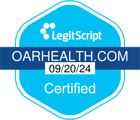The Cost of Treatment vs. The Cost of Drinking

Cost is one of the most common reasons that people who want to drink less or quit do not get or continue treatment. Many worry that they cannot afford treatment.
However, the benefits of drinking less or quitting almost always outweigh the costs. It is important to weigh the cost of treatment against the cost of continued alcohol use, especially if you are using alcohol excessively. The average drinker spends more than $2,000 per year on alcohol. People who drink heavily spend far more. You can calculate your own alcohol costs with a free tool provided by the National Institutes of Health.
Beyond the money spent to purchase alcohol, drinking too much has additional costs. Late night fast food, Ubers home, and impulsive online shopping add up. Not to mention more serious economic consequences, like increased healthcare costs, missing time at work, or car crashes. The Centers for Disease Control and Prevention estimates that excessive drinking drains $249 billion from the United States economy every year.
It is also important to understand the true costs of treatment rather than assuming it is too expensive. Many treatment options may be more affordable than you think. While inpatient rehabilitation programs often cost thousands of dollars per month, they are not the only option.
Oar Health offers medication-assisted treatment with plans that cost as little as $99 per month. Mutual peer support groups such as Alcoholics Anonymous, SMART Recovery, and Moderation Management are free to participate in.
Only you can decide whether treatment to help you drink less or quit is worth it. But it is important to carefully consider all of the costs of excessive alcohol use, all of the benefits of changing your relationship with alcohol, and all of the options for affordable treatment.
About The Author
Oar is a telemedicine platform that makes science-backed, medication-assisted addiction treatment approachable and accessible for millions of consumers who feel excluded by the current treatment landscape and who may have a wide range of goals, from moderation to abstinence.
- How It Works
- Alcohol & Health
- Alcohol Misuse & Alcohol Use Disorder
- Strategies to Drink Less or Quit
- Treatment Options
- Medication-Assisted Treatment
- Recovery Stories
- Member Stories
- Moderation Stories
- Sobriety Stories
- ¹ Oar Health membership plans include access to the Oar Health platform, virtual consultations with a healthcare professional, and medication if prescribed by a healthcare provider. 3 month membership plan costs $297, equating to $99/mo.
- ² Self-reported by members after 6 months of Oar Health membership.
- ³ Verywell Health survey of Oar Health members, published March, 2023.
- ⁴ Prescription medication is available only if prescribed by a licensed clinician.
- ⁵ Compounded medications are prepared based on a prescription from a healthcare provider. They are not reviewed by the FDA for safety or efficacy.




